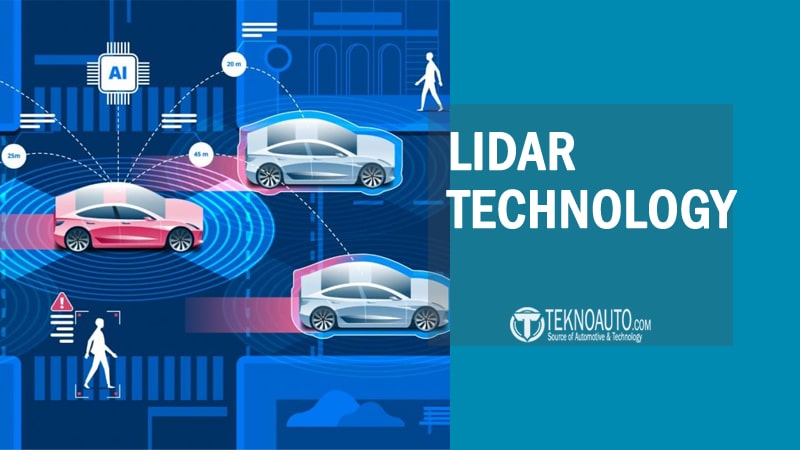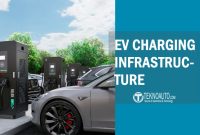LiDAR technology is quickly becoming one of the most critical enablers of autonomous driving and smart electric vehicles. As cars evolve from human-operated machines to intelligent, self-navigating systems, the need for real-time, precise perception of the surrounding environment becomes non-negotiable. This is where LiDAR—short for Light Detection and Ranging—steps in, offering a level of spatial awareness that cameras and radar alone often can’t achieve.
In both autonomous cars and next-gen EVs, LiDAR sensors act like the eyes of the vehicle, firing millions of laser pulses per second to create a 3D map of the world in astonishing detail. Whether it’s identifying a pedestrian in low light, gauging the distance of nearby vehicles at high speed, or navigating a sharp curve in the rain, LiDAR enables split-second decision-making with high confidence.
But despite its promise, LiDAR technology isn’t without its challenges. From high costs to integration complexities, the road to mainstream adoption still has bumps. So, how exactly does LiDAR work, and why are automakers investing heavily in it? Let’s explore how this cutting-edge sensor is reshaping the future of autonomous cars and electric vehicles alike.
What Is LiDAR Technology and How Does It Work?

Before diving into its role in modern vehicles, it’s important to understand how LiDAR works at its core. This foundational knowledge sets the stage for how the technology integrates into the driving ecosystem.
How LiDAR Works: Light Detection and Ranging Explained
LiDAR, short for Light Detection and Ranging, uses pulsed laser beams to measure distances between the sensor and surrounding objects. The system emits rapid bursts of laser light and calculates how long each pulse takes to bounce back after hitting a surface. This process, known as time-of-flight, enables the system to construct detailed 3D maps of the environment in real time. Unlike traditional cameras that rely on ambient light, LiDAR functions reliably in low-light or night-time conditions.
Core Components of a LiDAR System
A typical LiDAR system includes a laser emitter, a photodetector (or receiver), a scanner, and a signal processor. The emitter sends out light pulses, while the photodetector captures the reflected signals. The scanner mechanism—either rotating or solid-state—directs the beams across the environment. Finally, the signal processor interprets the data to generate a point cloud, which forms the basis for object recognition, path planning, and real-time decision-making in autonomous driving systems.
Why LiDAR Matters for Autonomous Vehicles and EVs
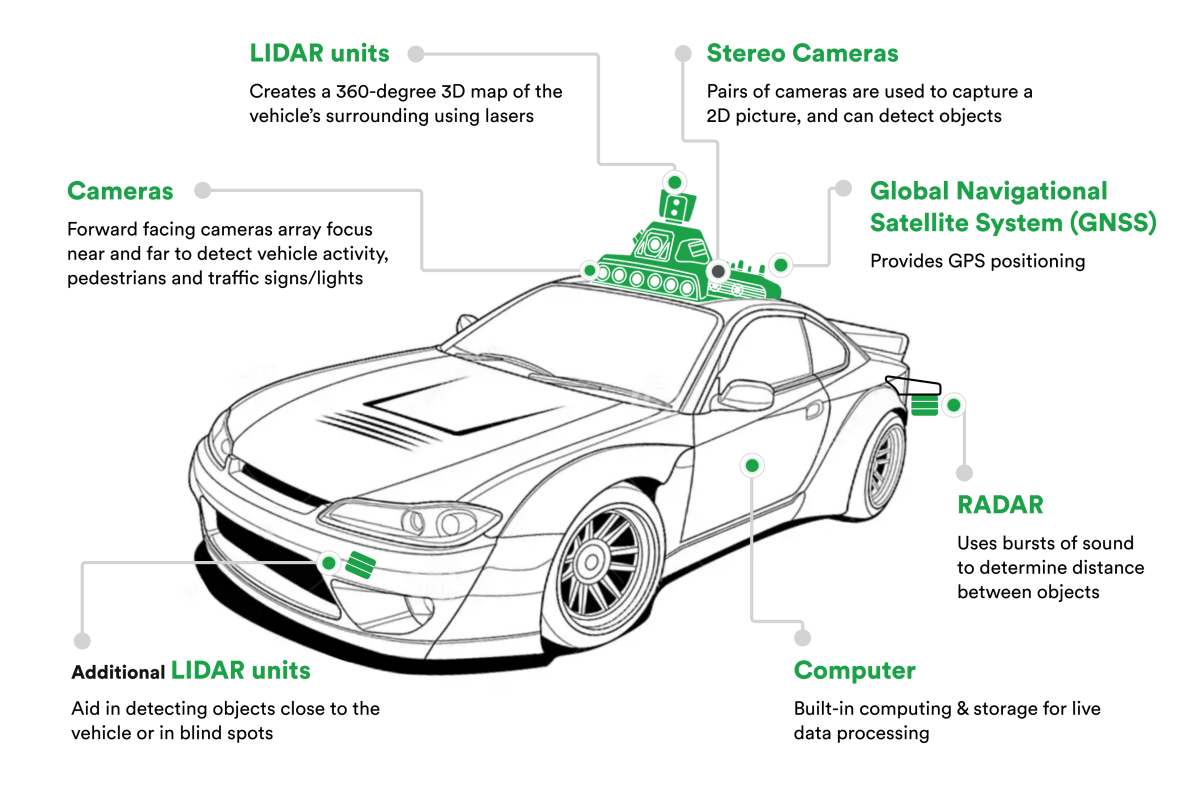
LiDAR has emerged as a game-changing technology in the world of advanced mobility, particularly for electric and autonomous vehicles. But what makes it so crucial compared to other sensor types?
Superior Object Detection and Environmental Awareness
LiDAR provides vehicles with a detailed, 360-degree understanding of their surroundings. It excels at detecting lane markings, nearby vehicles, pedestrians, and obstacles in various lighting and weather conditions. Unlike cameras, which can struggle in fog or low light, or radar, which may lack resolution, LiDAR delivers high-precision spatial data that is essential for safe and reliable navigation.
Critical Role in Sensor Fusion for Autonomy
Most autonomous driving systems use sensor fusion—the integration of multiple sensor inputs—to achieve high accuracy and redundancy. LiDAR plays a pivotal role in this mix, complementing radar and vision systems with high-fidelity 3D perception. In many SAE Level 3–5 vehicles, LiDAR acts as the primary sensor for mid-range detection, ensuring the car can anticipate changes in traffic flow, read road geometry, and adapt to dynamic environments in real time.
Types of LiDAR Systems Used in the Automotive Industry
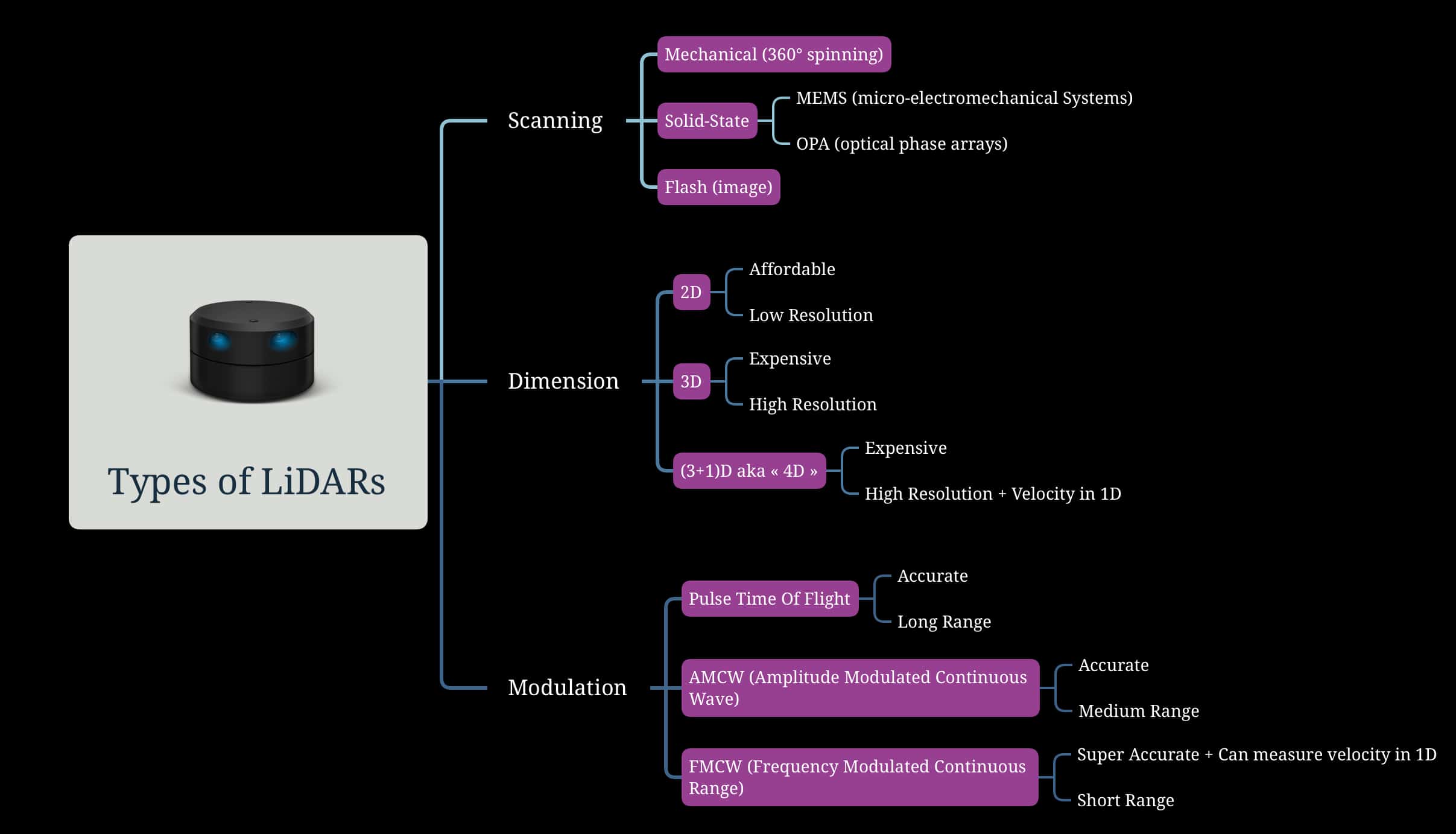
To truly appreciate how LiDAR technology is shaping the future of autonomous and electric vehicles, it’s important to understand the different types of LiDAR systems available today. Each variant brings unique strengths and limitations, influencing how they are integrated into modern automotive platforms.
Mechanical LiDAR
Mechanical LiDAR is the most traditional and widely recognized form of LiDAR technology, especially in early autonomous vehicle testing. It typically uses a rotating assembly that spins 360 degrees, emitting laser pulses to create a real-time 3D map of the surroundings. Because of its wide field of view and high-resolution output, mechanical LiDAR is often used in development environments to collect large volumes of sensor data in varied scenarios.
Despite its strong performance, mechanical LiDAR systems come with several limitations. Their moving parts make them prone to wear and mechanical failure over time, which limits their reliability in harsh conditions or long-term use. Additionally, these units are usually bulky and expensive, making them difficult to integrate into production vehicles at scale. The large dome-like housing often placed on the roof of prototype vehicles is a trademark of this type of system.
Still, mechanical LiDAR serves an essential role in research, prototyping, and high-level perception testing. It offers detailed data that can be invaluable during early-stage development, especially when mapping complex driving environments or training Machine Learning in Self-Driving Cars algorithms for object recognition. However, as the industry moves toward mass production and cost-efficiency, manufacturers are looking beyond mechanical solutions.
Solid-State LiDAR
Solid-state LiDAR addresses many of the drawbacks of mechanical systems. With no moving parts, it is more compact, robust, and easier to maintain. These sensors use technologies like MEMS mirrors, optical phased arrays, or flash LiDAR to steer light in different directions without physically moving any components. The result is a smaller footprint that fits easily into a vehicle’s body, such as in the grille or bumper, without disrupting aesthetics or aerodynamics.
One of the biggest advantages of solid-state LiDAR is its scalability. Because it can be manufactured at lower cost and with greater consistency, it is better suited for large-scale deployment in commercial electric and autonomous vehicles. Major automotive OEMs and LiDAR Technology startups alike are investing heavily in this category to meet the demands of both cost-sensitive consumer markets and high-performance autonomous platforms.
However, some solid-state systems trade off range or resolution for their compactness, especially flash-based LiDAR which illuminates an entire scene at once rather than scanning it line by line. Therefore, automakers must carefully select which solid-state configuration fits their use case, whether it’s short-range urban detection or long-range highway navigation.
Hybrid LiDAR Configurations
As no single LiDAR system fits all driving scenarios, some manufacturers are adopting a hybrid approach that combines the benefits of both mechanical and solid-state LiDAR. For example, a vehicle might include a high-resolution mechanical LiDAR on the roof for long-range perception on highways, while also embedding solid-state sensors into side panels for short-range awareness in city driving or parking.
This layered sensor strategy offers redundancy and adaptability, helping autonomous systems better handle the variability of real-world conditions. Hybrid systems can also reduce cost by minimizing the number of expensive high-performance sensors while still maintaining full environmental coverage. This balance between performance and price is crucial for OEMs trying to bring autonomous EVs to market at scale.
In essence, hybrid configurations represent the future direction of LiDAR technology—where flexibility, redundancy, and scalability all converge to support safe and intelligent mobility. The ability to combine different LiDAR types for different driving contexts could be the key to achieving reliable Level 4 and Level 5 autonomy.
The Role of LiDAR in Autonomous Driving

As self-driving technology progresses toward higher levels of autonomy,LiDAR Technology is emerging as a cornerstone in the vehicle’s ability to perceive, understand, and respond to its environment. By delivering high-resolution 3D data, LiDAR bridges the gap between perception and intelligent decision-making—functions that are vital to fully autonomous driving.
Autonomous Navigation and Object Detection
LiDAR enables autonomous vehicles to build a precise, real-time 3D model of their surroundings, allowing for accurate autonomous navigation in complex and dynamic environments. From urban intersections to winding country roads, LiDAR systems scan the environment at rapid intervals, detecting objects such as vehicles, pedestrians, cyclists, road signs, and traffic cones.
Unlike traditional vision-based systems, LiDAR does not rely on ambient light, making it highly effective both day and night, and in poor weather conditions. This capability is essential for robust object detection, enabling AVs to make safe decisions even when visual cues are compromised.
AI-Driven Decision Making with LiDAR Inputs
Modern self-driving vehicles rely on AI driving models to interpret sensor data and make split-second decisions. LiDAR feeds into these models with highly accurate spatial and depth information. When fused with input from other sensors—such as cameras and radar—LiDAR enhances the AI’s perception accuracy through a process known as sensor fusion.
This integration allows the autonomous system to better predict behaviors of other road users, evaluate risks, and optimize driving strategies. For example, detecting the exact speed and direction of a cyclist at an intersection helps the AI choose whether to yield or proceed. This level of nuanced decision-making is critical for achieving Level 4 and Level 5 autonomy.
Comparison with Cameras and Radar
Each sensor in an autonomous vehicle has its strengths—and limitations. Cameras provide rich color and texture details, making them ideal for reading signs or recognizing traffic lights. Radar, on the other hand, excels in long-range detection and performs well in adverse weather, but lacks fine resolution.
LiDAR fills the gap between the two by offering high-resolution depth perception, giving a more complete picture of the environment. While cameras may struggle with shadows or glare, and radar might miss small objects, LiDAR provides consistent and detailed environmental feedback. In advanced systems, combining all three—LiDAR, radar, and cameras—results in a robust perception system that significantly improves safety and autonomy.
Integration of LiDAR in Electric Vehicles
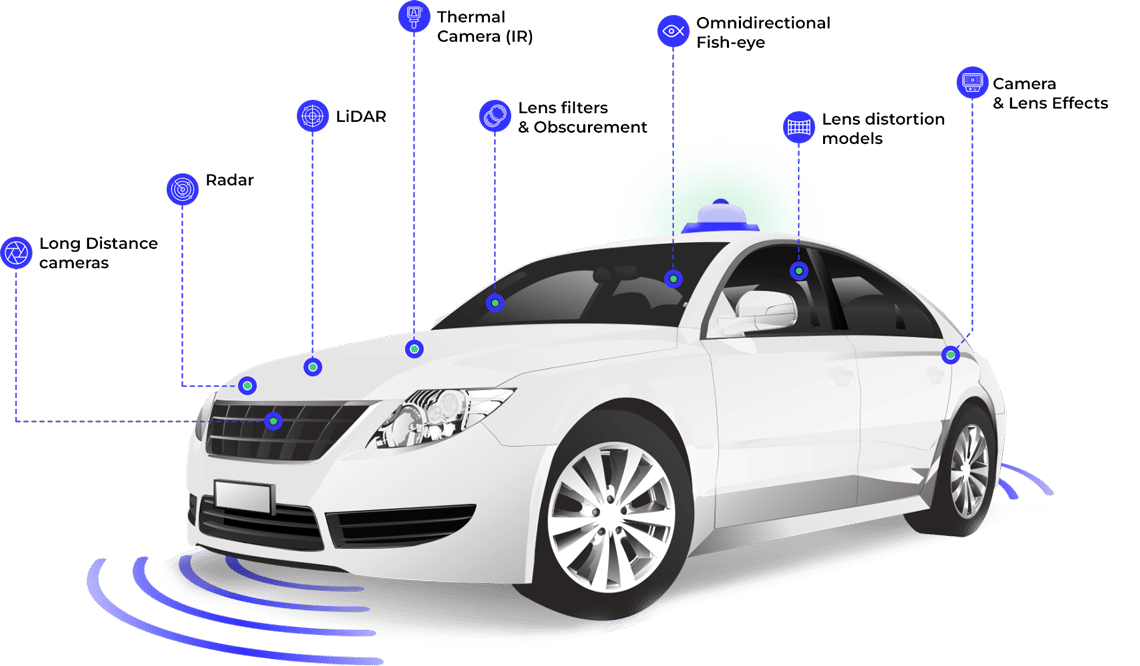
As electric vehicles (EVs) grow more sophisticated, their reliance on smart sensors and advanced automation systems increases—making LiDAR technology a natural fit. By enabling EVs to perceive their surroundings with exceptional detail and accuracy, LiDAR plays a pivotal role not just in navigation but also in energy management and system efficiency. From Tesla to NIO and Lucid Motors, leading EV manufacturers are investing in smart EV systems powered by AI and sensor fusion, with LiDAR as a central component.
How LiDAR Is Being Used in Modern EVs
Several premium EV manufacturers have already begun integrating LiDAR into their production vehicles or prototypes. For instance, NIO’s ET7 features a roof-mounted LiDAR unit that assists with its Navigate-on-Pilot (NOP) feature, offering semi-autonomous capabilities on highways. Similarly, Lucid Motors incorporates LiDAR in its DreamDrive system to improve long-range detection and situational awareness.
While Tesla has publicly downplayed the use of LiDAR in favor of camera-based vision, industry trends suggest a broader shift toward EV sensors that include multi-modal inputs—LiDAR being one of the most promising due to its depth accuracy and reliability. As more OEMs prioritize safety and autonomy, LiDAR is increasingly being viewed as a critical sensor for electric vehicle automation.
Energy Efficiency and Battery Management Through Environmental Awareness
One of the lesser-known advantages of LiDAR in EVs is its role in optimizing energy usage. By helping the vehicle anticipate terrain changes, traffic conditions, and driving patterns, LiDAR contributes to real-time route planning that can minimize unnecessary acceleration or braking. This predictive approach translates into more energy-efficient driving behavior, which directly impacts battery life.
In some advanced systems, LiDAR data is also used to adjust the regenerative braking threshold and air conditioning settings based on real-time conditions—supporting smarter battery optimization strategies. This synergy between perception and energy management underscores how LiDAR can go beyond navigation to enhance overall system performance.
Real-World Implementations in Electric Vehicles
LiDAR’s impact on EVs is not just theoretical—it’s already being applied on the road. NIO’s ADAS (Advanced Driver Assistance System) leverages LiDAR for smoother lane changes and adaptive cruise control. Lucid Air’s combination of LiDAR and AI enables proactive responses to unpredictable road scenarios. Even smaller EV startups in China and Europe are experimenting with affordable solid-state LiDAR modules to deliver advanced features at scale.
These real-world applications show how LiDAR in electric vehicles is quickly evolving from a premium feature to a near-essential component in modern mobility. As regulations tighten and consumer expectations rise, the demand for precise, safe, and energy-efficient EVs will further drive LiDAR adoption in the industry.
Key Benefits of LiDAR in Smart Mobility
LiDAR technology has become a cornerstone in the evolution of smart mobility, offering advanced sensing capabilities that surpass many traditional sensor systems. As cities and transportation systems become more connected and automated, the demand for precise, real-time environmental data has surged. LiDAR responds to this demand with features that directly enhance predictive safety systems, situational awareness, and autonomous driving performance.
Unmatched Accuracy and Precision
One of LiDAR’s greatest strengths is its ability to deliver high-resolution sensing with centimeter-level accuracy. Each LiDAR unit emits laser pulses and measures the time it takes for them to bounce back from objects, creating a highly detailed 3D “point cloud” of the environment.
This level of spatial precision allows autonomous systems to detect lane boundaries, road edges, vehicles, pedestrians, and small obstacles with exceptional clarity. In dynamic environments like intersections or urban streets, this capability enables real-time responses that reduce the risk of collisions or navigation errors—supporting safe and reliable autonomy.
Performance in Adverse Weather Conditions
Unlike cameras that depend on ambient light or radar that can struggle with smaller objects, LiDAR systems provide reliable obstacle detection even in challenging environments. Rain, fog, and low-light conditions typically degrade camera vision, but LiDAR maintains a consistent signal due to its active sensing approach.
For smart mobility applications such as robo-taxis or autonomous shuttles, this adverse weather performance is crucial. The ability to “see” accurately regardless of external conditions ensures that autonomous systems remain functional and safe across a variety of use cases, from city driving to rural logistics.
Predictive Capabilities for Proactive Safety
LiDAR’s ability to capture and interpret 3D spatial data in real time enhances the situational awareness of vehicles and mobility systems. It doesn’t just see objects—it understands their position, trajectory, and speed. This is essential for predictive safety systems, which rely on anticipating movements before they become threats.
For example, if a pedestrian is walking toward a crosswalk while a cyclist approaches from the other direction, the system can anticipate both paths and adjust accordingly—slowing down, stopping, or rerouting. This proactive approach to safety distinguishes LiDAR-equipped vehicles in the broader context of smart, autonomous mobility.
Challenges and Limitations of LiDAR Technology in Automotive
Despite its immense potential, LiDAR technology is not without drawbacks. While it offers high-resolution perception and enhances autonomous functionality, various technical, economic, and regulatory challenges must be addressed before it can become standard across the automotive industry. Understanding these limitations is essential for a balanced view of where LiDAR Technology fits in the future of mobility.
High Cost and Manufacturing Complexity
One of the primary barriers to LiDAR Technology adoption in mass-market vehicles is its cost. Traditional mechanical LiDAR systems can run into thousands of dollars per unit, making them economically viable only for luxury vehicles or prototypes. Although solid-state LiDAR has brought costs down significantly, it’s still higher than radar or cameras, which remain the dominant choice in many entry-level driver-assistance systems.
Additionally, the manufacturing process for LiDAR sensors is complex, often involving precise alignment and calibration. This complexity not only raises costs but also slows down mass production. For automakers focused on scalability, affordability remains a key issue that limits broader deployment.
Environmental Vulnerabilities and Data Limitations
Although LiDAR performs better than cameras in poor lighting, it can still be affected by certain environmental conditions. Heavy rain, dense fog, or snow can scatter or absorb laser pulses, reducing the accuracy of the 3D point cloud. This may lead to degraded performance in extreme weather—particularly in long-range detection tasks.
Moreover, while LiDAR provides excellent spatial data, it lacks semantic understanding of objects, which cameras excel at. For example, LiDAR can detect a road sign’s shape and position, but it can’t read the sign’s text. As a result, LiDAR is best used in combination with other sensors (like cameras and radar), which adds further complexity to system integration and data fusion.
Integration Challenges and Regulatory Hurdles
Integrating LiDAR Technology into vehicle design isn’t just a technical challenge—it’s also an aesthetic and aerodynamic one. Bulky external sensors (like spinning rooftop LiDARs) may disrupt vehicle styling or increase drag, especially in electric vehicles where efficiency is paramount. Even solid-state versions must be carefully placed to ensure wide field-of-view without compromising design.
Beyond hardware, regulatory frameworks for autonomous vehicles using LiDAR Technology are still evolving. Standards for data accuracy, safety testing, and sensor validation are not yet fully harmonized globally. These regulatory uncertainties can delay deployment and create legal complexities for manufacturers and software providers alike.
Table: Major Challenges of LiDAR Technology in Automotive
| Challenge Area | Description | Impact |
|---|---|---|
| Cost & Scalability | High price of mechanical LiDAR; solid-state still more expensive than radar | Limits use in affordable vehicles |
| Weather Sensitivity | Performance can degrade in rain, snow, or fog due to light scattering | Reduced perception reliability |
| Data Limitations | Lacks color and semantic data (e.g., cannot read signs like cameras) | Needs sensor fusion to function optimally |
| Integration Complexity | Placement affects design, aerodynamics, and thermal management in EVs | Design constraints and engineering tradeoffs |
| Regulatory Barriers | Lack of unified safety and testing standards globally | Slows approval and deployment |
Future Outlook: LiDAR Advancements and Market Trends
As the automotive industry accelerates toward full autonomy and intelligent electrification, LiDAR technology is undergoing rapid evolution. Innovations in design, cost efficiency, and system integration are reshaping how this sensor is adopted at scale.
From compact modules embedded into bumpers to LiDAR-on-chip solutions, the road ahead suggests a more accessible, robust, and ubiquitous role for LiDAR Technology across both mainstream and high-end vehicles.
Miniaturization and Cost Efficiency
One of the most promising trends in LiDAR Technology development is miniaturization. Traditional mechanical systems, once limited to bulky roof-mounted domes, are being replaced by smaller, more aerodynamic units that can be discreetly embedded into vehicle body panels. This shift not only improves vehicle aesthetics but also enables better sensor positioning and protection.
Alongside physical downsizing, cost reduction remains a top priority. The use of simplified optics, integration with consumer-grade electronics, and economies of scale are gradually bringing LiDAR prices down. This opens opportunities for deployment beyond luxury autonomous vehicles and into mid-range electric cars and commercial fleets.
By 2030, experts predict that affordable LiDAR Technology solutions will be as common as rear-view cameras, playing a critical role in both safety systems and fully autonomous driving.
Solid-State LiDAR and Chip-Level Integration
The transition from mechanical to solid-state LiDAR marks a significant leap in reliability and scalability. With no moving parts, these sensors boast better durability and are less prone to environmental degradation. More importantly, they are easier to mass-produce, paving the way for widespread OEM adoption.
Even more groundbreaking is the emergence of LiDAR-on-chip technology, which integrates the entire LiDAR system onto a single silicon photonics chip. Companies like Aeva, Luminar, and SiLC are pushing this frontier, aiming to deliver LiDAR modules that are smaller, faster, and cheaper than anything currently on the market.
Chip-based LiDAR is particularly attractive for electric vehicles, where compactness and power efficiency are vital. It also simplifies the sensor fusion process with other automotive chips (like those for AI or battery management), creating a tightly integrated perception stack for future smart mobility platforms.
Market Forecast and Expanding Industry Adoption
According to recent market studies, the global automotive LiDAR market is projected to grow from $1.5 billion in 2024 to over $6 billion by 2030, driven by advancements in autonomous driving levels and EV penetration. As regulatory frameworks mature and consumer demand for safety increases, more automakers are incorporating LiDAR into their ADAS (Advanced Driver Assistance Systems).
While companies like Waymo and Cruise continue refining robotaxi platforms with high-end LiDAR arrays, mainstream automakers such as Mercedes-Benz, Volvo, and Toyota are experimenting with mid-range LiDAR for hands-free driving on highways.
Beyond cars, industries like logistics, agriculture, and smart infrastructure are also exploring LiDAR Technology for high-precision mapping and navigation—further expanding its ecosystem. In this landscape, startups and legacy suppliers alike are competing to offer differentiated solutions across a broad range of vehicles and mobility environments.
Comparison: LiDAR vs Radar vs Camera in Vehicle Autonomy
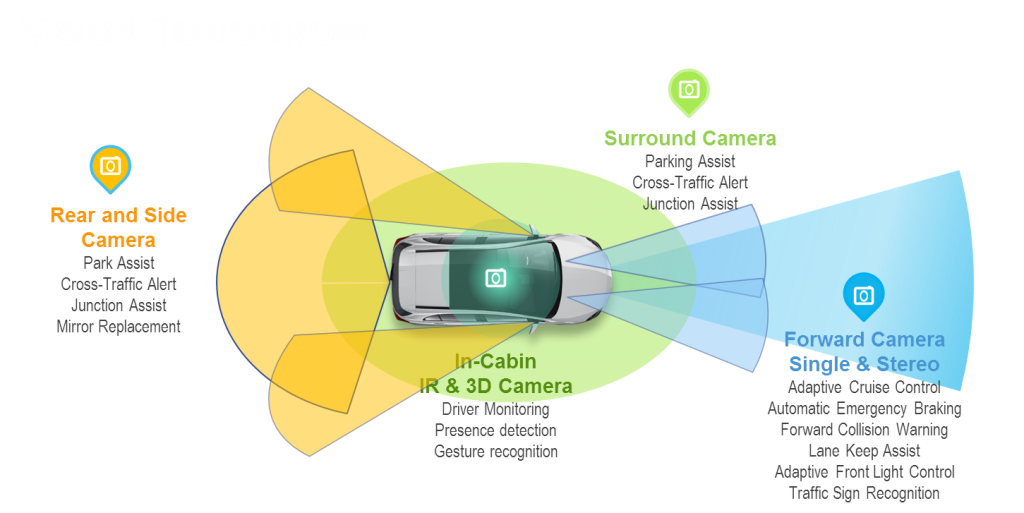
Autonomous vehicles rely on a combination of sensors to perceive and understand their surroundings. Among the most prominent are LiDAR, Radar, and Cameras—each bringing its own set of advantages and trade-offs.
Understanding how these systems compare helps illustrate why a sensor fusion approach is favored by most self-driving platforms. It also highlights where LiDAR technology stands out and where it needs support from other sensing modalities.
Sensor Capabilities and Trade-Offs
LiDAR provides high-resolution 3D mapping of the environment by emitting laser pulses and measuring their reflections. Its strength lies in precise object localization, depth perception, and consistency across various lighting conditions. However, it can struggle in heavy rain or fog and often comes at a higher cost.
Radar, on the other hand, uses radio waves to detect objects. It performs well in poor weather conditions and offers excellent range, but its resolution is relatively low, making it less effective at identifying small or complex objects.
Cameras offer rich visual information that mimics human eyesight, enabling the recognition of signs, colors, and lane markings. Yet, their performance degrades in low light, glare, or inclement weather—requiring support from depth-based sensors like LiDAR.
Optimal Sensor Fusion Strategy
Rather than relying on a single sensor type, the most advanced autonomous driving systems use sensor fusion, combining LiDAR, Radar, and Cameras to offset each other’s weaknesses. For instance, LiDAR’s precise 3D data complements the semantic understanding from cameras and the all-weather detection capability of radar.
Tesla’s current approach, which leans heavily on cameras and neural networks, is notably different, but many experts argue that including LiDAR Technology improves redundancy and overall safety—especially in higher levels of automation (L3 and above).
In electric vehicles, the efficiency of this fusion is critical. Sensor processing must balance accuracy and energy consumption, making compact solid-state LiDAR Technology and low-power radar essential components in future EV stacks.
Comparison Table: LiDAR vs Radar vs Camera
| Criteria | LiDAR | Radar | Camera |
|---|---|---|---|
| Detection Range | Medium to Long (up to 250m) | Long (up to 500m) | Medium (up to 200m) |
| Resolution | High (precise 3D point cloud) | Low (coarse object detection) | Very High (rich image data) |
| Performance in Bad Weather | Moderate (sensitive to rain/fog) | Excellent | Poor to Moderate |
| Object Recognition | Excellent (shape, size, depth) | Limited (velocity, range only) | Excellent (signs, lanes, colors) |
| Cost | High (declining with solid-state) | Low to Moderate | Low |
| Power Consumption | Moderate | Low | Moderate |
| Use Case Strengths | 3D Mapping, Obstacle Detection | Speed & Distance Sensing | Visual Identification & Classification |
Conclusion: Why LiDAR Technology Is Pivotal for the Future of Autonomous Cars and EVs
As the automotive industry continues its shift toward autonomy and electrification, LiDAR technology stands out as a cornerstone of this transformation. From enabling real-time 3D perception to enhancing safety in complex environments, LiDAR Technology delivers capabilities that neither cameras nor radar can fully match on their own. Its integration into autonomous cars and electric vehicles is not just a technical upgrade—it’s a fundamental leap in how vehicles see, think, and make decisions.
Throughout this article, we’ve explored how LiDAR Technology enhances navigation, supports advanced AI systems, improves EV efficiency, and contributes to predictive safety features in smart mobility ecosystems. We’ve also addressed the challenges—like cost and weather limitations—and how the industry is overcoming them through solid-state design and chip-level integration.
With growing market interest and continued innovation, LiDAR technology is expected to become more compact, affordable, and widespread. Whether embedded in the bumper of a luxury EV or mounted on top of a robotaxi, LiDAR’s role in shaping the future of transportation is undeniable. For automakers, suppliers, and technology firms alike, mastering this sensor technology may be the key to unlocking the next generation of intelligent, autonomous, and sustainable mobility.
FAQ About LiDAR Technology in Autonomous Cars and EVs
What is LiDAR technology and how does it work in cars?
LiDAR (Light Detection and Ranging) uses laser pulses to measure distances between the sensor and surrounding objects. In automotive applications, it generates real-time 3D maps that help autonomous vehicles detect lanes, pedestrians, and obstacles with high precision.
Why is LiDAR Technology important for autonomous driving?
LiDAR provides accurate depth perception and environmental awareness, allowing vehicles to “see” in 360 degrees. Unlike cameras, it works reliably in various lighting conditions, making it critical for safe decision-making in autonomous systems.
Can electric vehicles benefit from LiDAR technology too?
Absolutely. In electric vehicles (EVs), LiDAR Technology helps optimize navigation and battery efficiency by enabling smarter route planning and adaptive driving behavior based on real-time surroundings. Many EV manufacturers are integrating LiDAR to enhance their vehicles’ automation levels.
How does LiDAR compare to radar and cameras in cars?
LiDAR Technology offers higher resolution and more accurate 3D mapping than radar and is less sensitive to lighting conditions than cameras. While each sensor has strengths, the combination of all three—called sensor fusion—delivers the best performance in autonomous vehicles.
What are the current limitations of LiDAR in automotive use?
Challenges include high production costs, sensitivity to weather (like heavy rain or fog), and integration complexity. However, advances in solid-state LiDAR and chip-level solutions are addressing these issues, paving the way for wider adoption in both EVs and autonomous cars.

